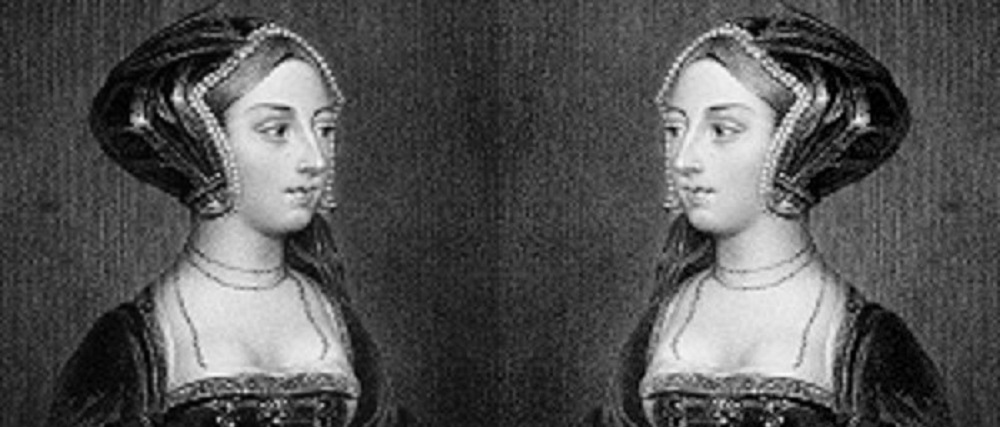Anne Boleyn
Posted on 20th January 2021
There is much speculation over the year of Anne Boleyn’s birth but it is believed to be somewhere between 1500 and 1507. She was the daughter of Thomas Boleyn, 1st Earl of Wiltshire and Lady Elizabeth Howard.
Little is known of her very early life, but she lived for many years in Europe and was educated both in the Netherlands and France. She worked in the French Court of King Louis XII as a lady-in-waiting to his wife Mary, the sister of Henry VIII and returned to England in 1522 to become a lady-in-waiting to Queen Catherine of Aragon.
By 1523 Anne was betrothed to Lord Henry Percy but this betrothal was broken off by Cardinal Thomas Wolsey, it is believed at the request of King Henry VIII.
Did Henry already have his eyes on her at this time? We cannot be sure, for it is stated that he did not start to pursue her until 1526.
Anne was a vivacious and flirtatious woman with an abundance of charm and a quick wit, but she was also ambitious and politically astute.
The young men at court would swarm around her finding her glamorous and maybe even exotic, and she certainly knew how to entice them to her. Henry was to become besotted with Anne however she refused to become his mistress.
Anne had already seen how her sister Mary, who had been Henrys mistress, was treated - ridiculed at court and then cast aside and she wanted a good deal more than that for herself.
She did however tease Henry just enough to keep him interested until he became obsessed with her and was determined to make her his wife.
The only person standing in his way was his current wife Queen Catherine.
It was to take Henry many years to have his marriage to Catherine annulled, and he could only do so by breaking with the Catholic Church and becoming the Head of the Church of England.
Henry did not believe his marriage to Catherine to have ever been legal and therefore to have never existed. He had already married Anne Boleyn in a private ceremony in January 1533, although it is believed they had married in a secret ceremony even earlier than this in November 1532. Either way, these marriages to Anne Boleyn had taken place before his marriage to Catherine of Aragon was declared null and void by the Archbishop of Canterbury, Thomas Cranmer on 23 May 1533.
Anne Boleyn’s marriage to Henry was declared valid on 28 May 1533 and she was crowned Queen of England on 1 June that year.
Both the marriage and the coronation had to be rushed through due to Anne being pregnant and to secure the legitimacy of the child.
Much to Henrys disappointment Anne gave birth to a daughter, the future Queen Elizabeth I on 7 September 1533.
Anne suffered three further miscarriages and was unable to produce a male heir. As Henry was desperate for a male heir, this failure put a strain on the marriage and Henry was starting to look elsewhere.
Anne became aware in 1535 that Henry had taken a fancy to her lady-in-waiting Jane Seymour. It seemed like a horrible déjà vu, especially when Jane was soon to become his mistress.
A plot was instigated to bring the downfall of Anne and what followed was the arrest of five people accused of having had relations with the Queen. They were Sir Francis Weston, William Brereton, Mark Smeaton, Sir Henry Norris and Anne’s own brother Lord Rochford. Sir Thomas Wyatt had also been arrested but was later released.
Mark Smeaton is the only man to have pleaded guilty, probably due to being tortured but in doing so he implicated all the others.
None of the arrested men except for Lord Rochford were allowed to defend themselves in court. They were all convicted on 12 May 1536 and executed five days later.
A secret commission was formed to investigate Queen Anne for High Treason, and she was charged with Adultery, Incest and Witchcraft.
She was tried and convicted on 15 May 1536. Whether the evidence produced against her was true is unlikely but she had made many enemies at court.
Anne Boleyn was executed on Friday 19 May 1536 in the grounds of the Tower of London after only three years of marriage.
She was buried in an unmarked grave in the Chapel of St Peter ad Vincula also within the grounds of the Tower of London. Her remains were later discovered during chapel renovations and her burial place is now recognised and marked.
Tagged as: Junior Tudors
Share this post:





